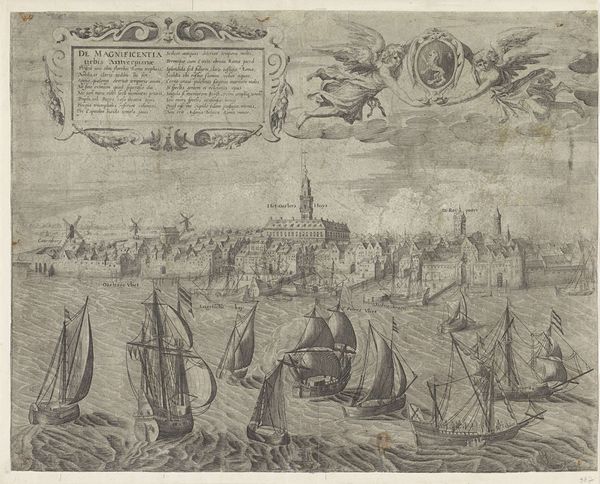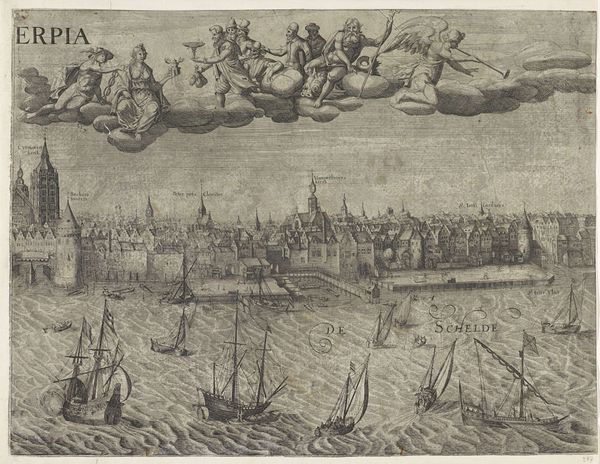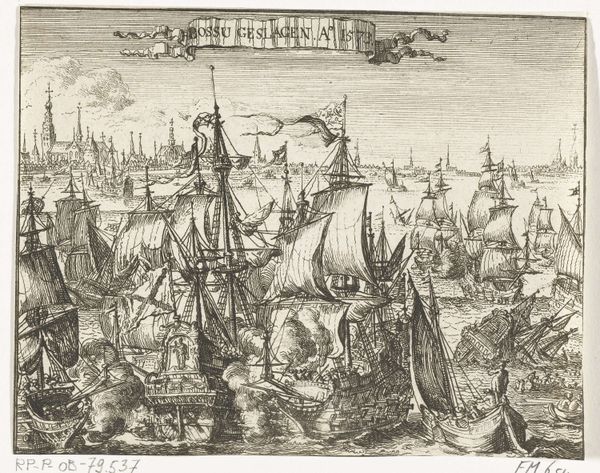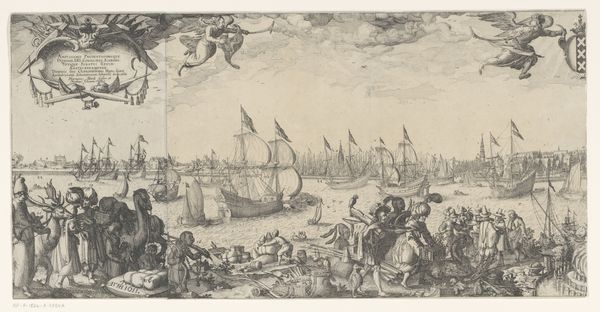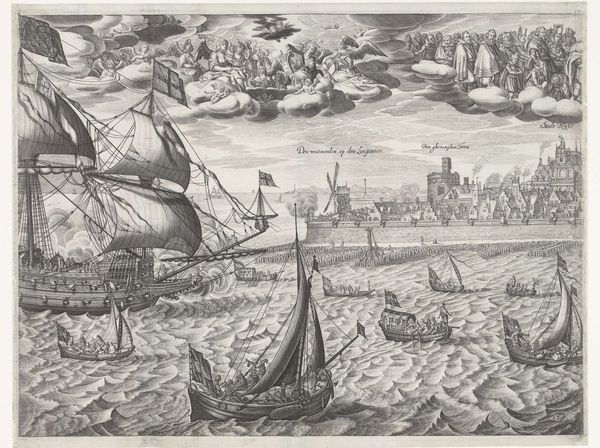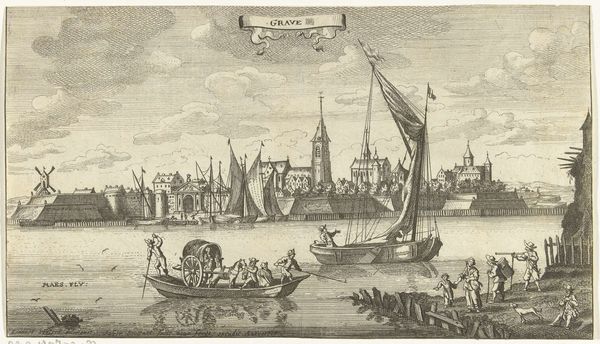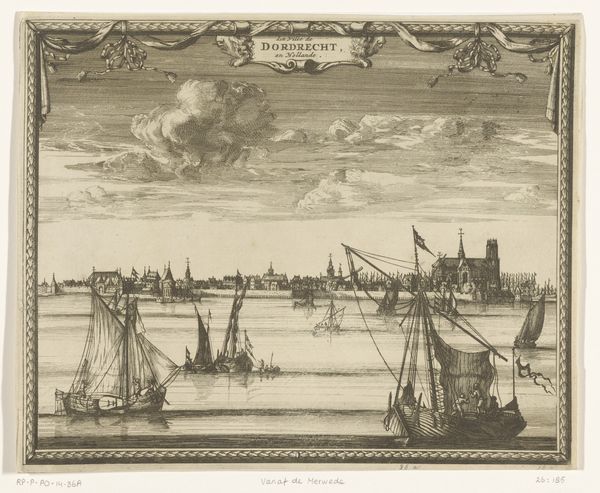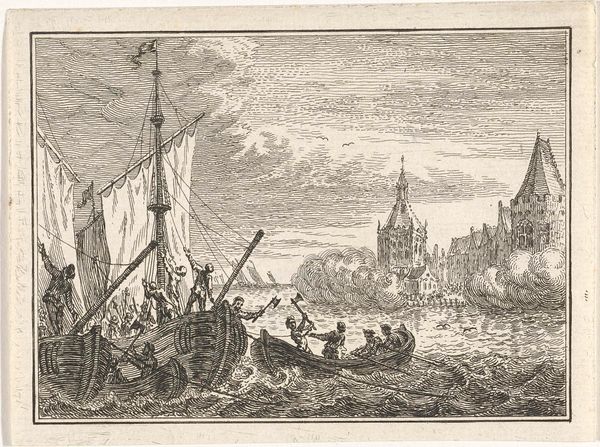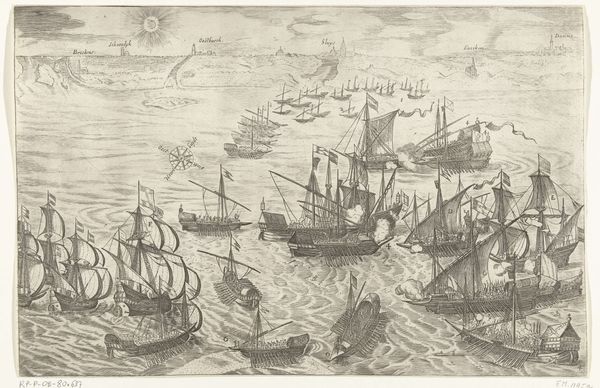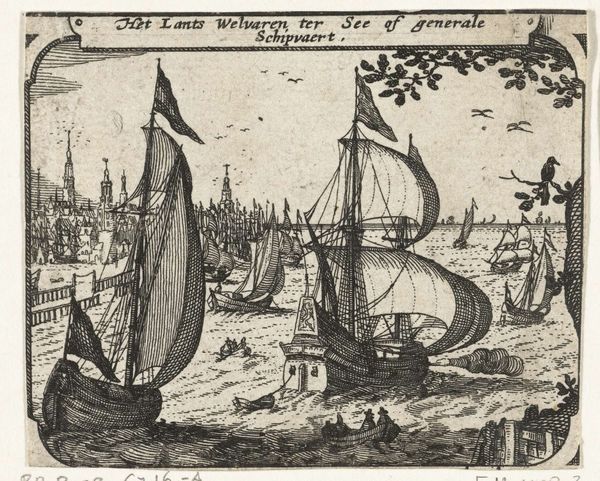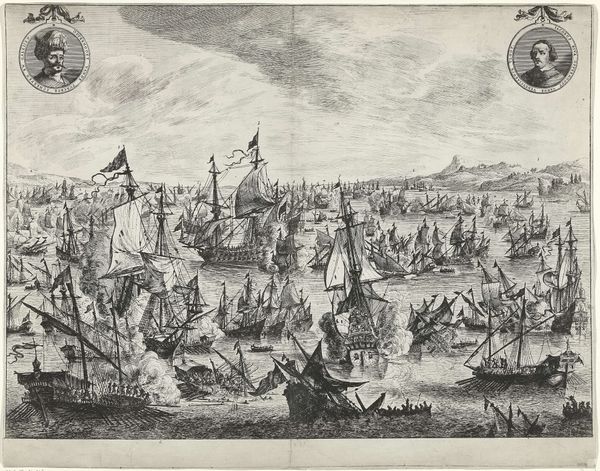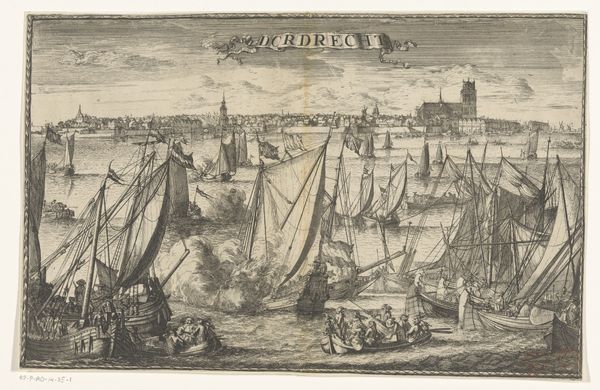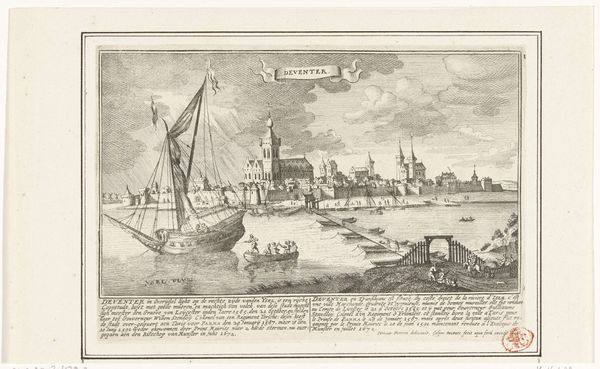
drawing, print, ink, engraving
#
drawing
#
baroque
# print
#
landscape
#
ink
#
pen-ink sketch
#
cityscape
#
engraving
Dimensions: height 420 mm, width 543 mm
Copyright: Rijks Museum: Open Domain
Editor: This cityscape, “Antwerpen van de Schelde te zien, linker middenblad,” is an engraving, ink, and drawing by an anonymous artist made sometime between 1617 and 1667. The image shows Antwerp from the river Schelde. The overwhelming number of ships makes me think of the city’s importance as a trade center, but I wonder, what else do you see in this piece? Curator: I'm immediately drawn to the intense labor embedded in this print’s production. The creation of this detailed cityscape demanded meticulous craftsmanship – think about the physical act of carving those fine lines into the printing plate. Furthermore, the depiction of numerous ships isn't merely representational. They point directly to the engine of Antwerp’s 17th-century economic power and reflect a vast network of human and material exchange. Editor: So you're saying the image itself is almost a record of its own making and the city's industry? Curator: Precisely. Consider the paper it's printed on as well – its source, manufacture, and eventual consumption all speak to the economic currents of the time. The ink, the printing press, and the distribution networks—all were commodities integral to Antwerp's rise as a commercial hub. How might its consumers have engaged with such imagery? Editor: I guess it served as a kind of advertisement or even propaganda. A way to promote Antwerp's success and attract even more merchants and investment. Curator: Absolutely. And remember, printed images were also accessible to a wider audience compared to paintings. This print offers a valuable lens through which to view the city's self-representation and its relationship to global trade and power dynamics of the time. Did Antwerp citizens share this perspective, do you think? Editor: This gives me so much to consider about the cultural and economic impact surrounding something we might just consider a pretty picture. I had not considered the socioeconomic impacts that made such prints possible. Thank you. Curator: The beauty, in many ways, is just the surface. It's uncovering these material layers that provides richer context to this print.
Comments
No comments
Be the first to comment and join the conversation on the ultimate creative platform.
